The British brand Steljes, from which we recently reviewed the MS2 streamer, also sells a small portable connected radio, called the SA60, which will be the object of this testing ground.
Possessing a removable mains supply and including a battery, it can be used anywhere, indoors and outdoors, but its Wi-Fi functions will require it to be close to a network, while it can also broadcast music thanks to its FM radio section or via Bluetooth with a smartphone, or from its auxiliary input connected to the same smartphone through a male/male 3.5mm Jack cable.
At home, you can even connect it to your Hi-Fi system via its line out, use it as a network player and control it through the Undock application or benefit from its compatibility with UPnP to stream Qobuz with BubbleUPnP or mconnect.
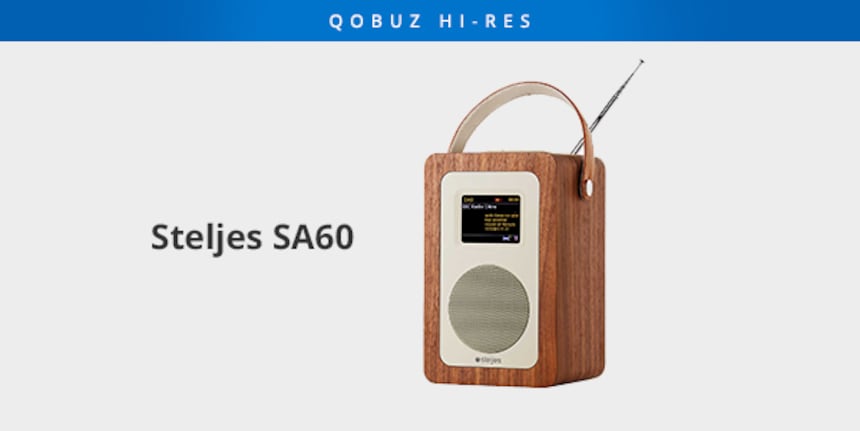
Presentation
It possesses an attractive aesthetic, thanks to the round SA60 speaker, the wood effect finish, its supple leather handle and its added-on speaker facade which is protected by a grille, above which a small color display is located.
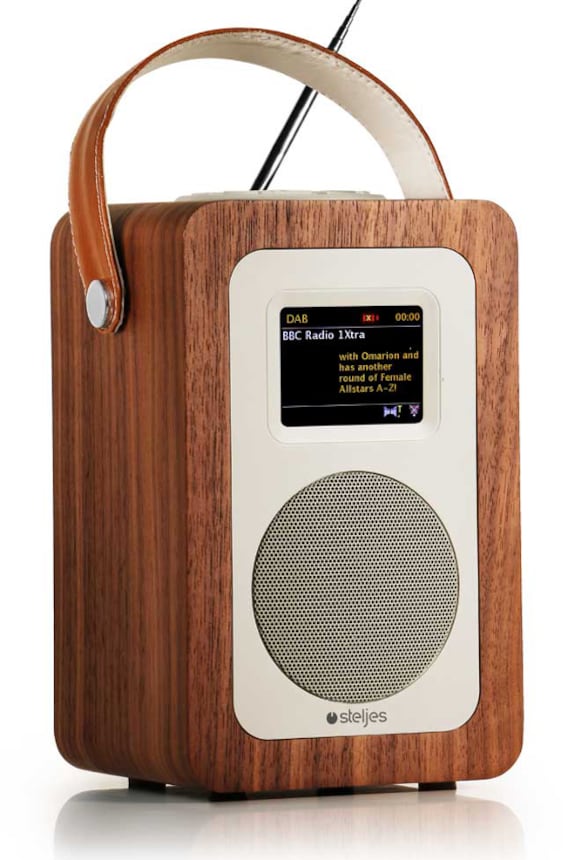
If this speaker displays a very retro form, its two other finishes, white and black, even if they look more modern, are also very attractive.
On top of the speaker, a circular area gathers the entirety of the commands in an ergonomic way. The central scroll wheel controls the volume and pressing it activates or deactivates the silent mode. It also helps you navigate the menus and select options.
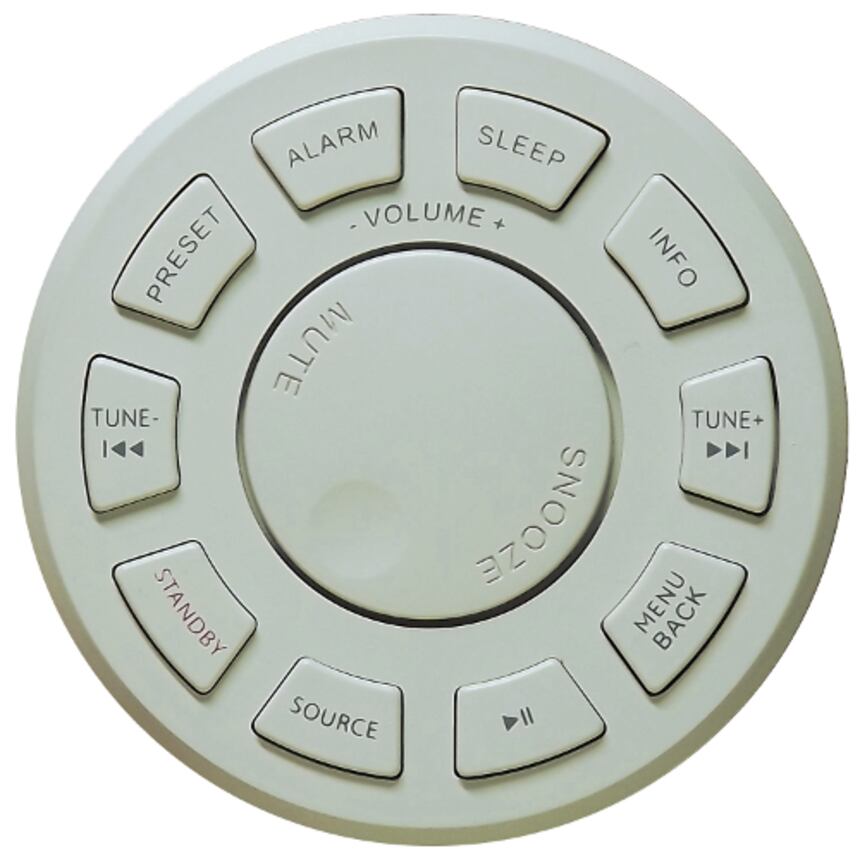
On the rear side, the speaker’s flare port, the FM antenna, the connectors as well as a slot for a 2200 mAH / 11V battery can all be found. Including, a slide switch which allows you to shut it down.
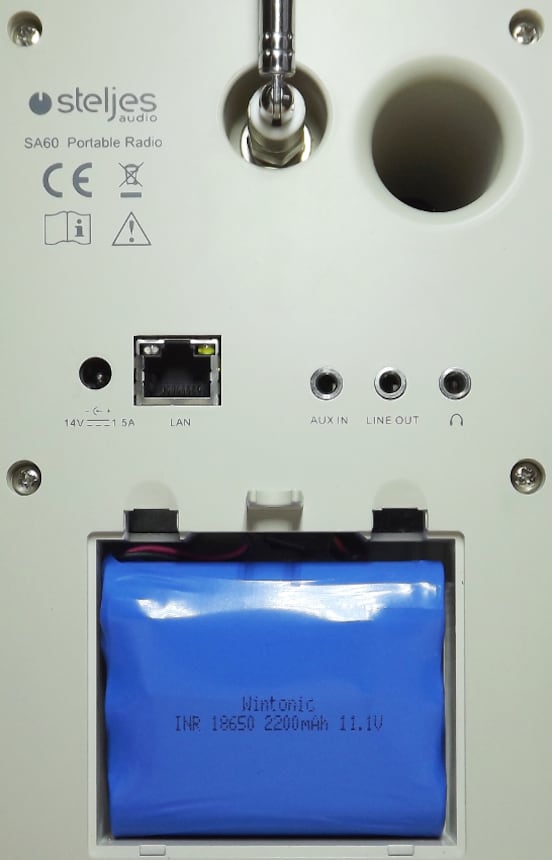
Connectors include a coaxial plug for the mains unit, a RJ45 connector for the network, and three 3.5mm Jack sockets, corresponding to an auxiliary input, a line out and a headphone out.
Manufacturing
The box of the Steljes SA60 speaker is made of 12mm thick MDF and a cutout in its front side allows you to fasten a ribbed resin plate where the 7.5 cm broadband loudspeaker equipped with a nice 6cm ferrite magnet is located, as well as the display circuit.
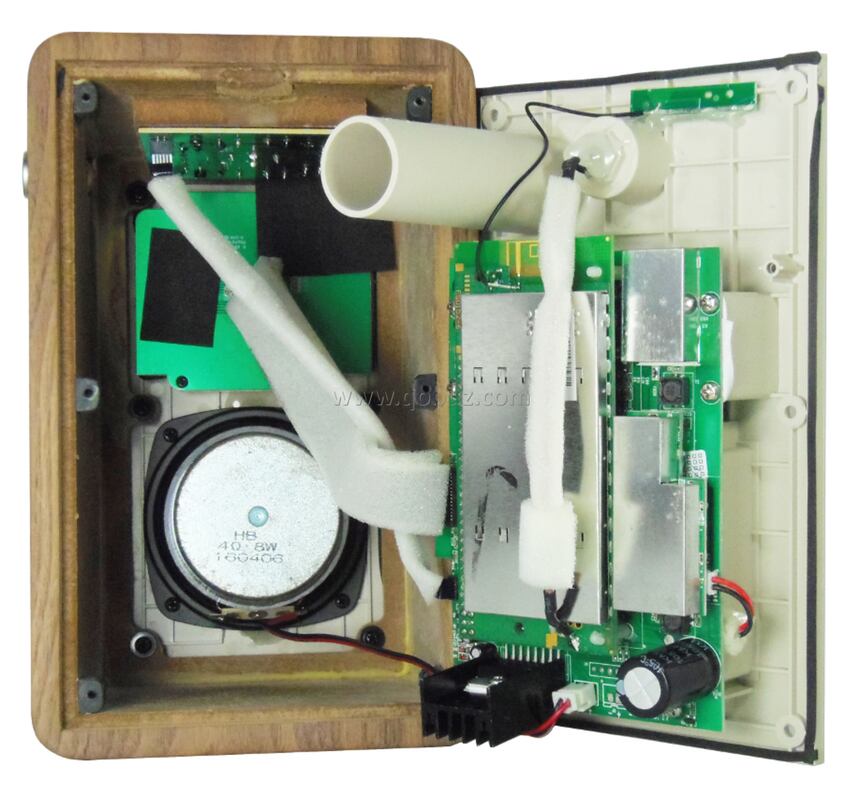
The main circuit is attached to the technical plate and you can see on it the Frontier Silicon Venice 6.5 Wi-Fi card (compatible with UPnP and DLNA) which includes a Cirrus Logic CS4344 digital-to-analog converter (24-Bit/192 kHz), and which also handles FM radio reception.
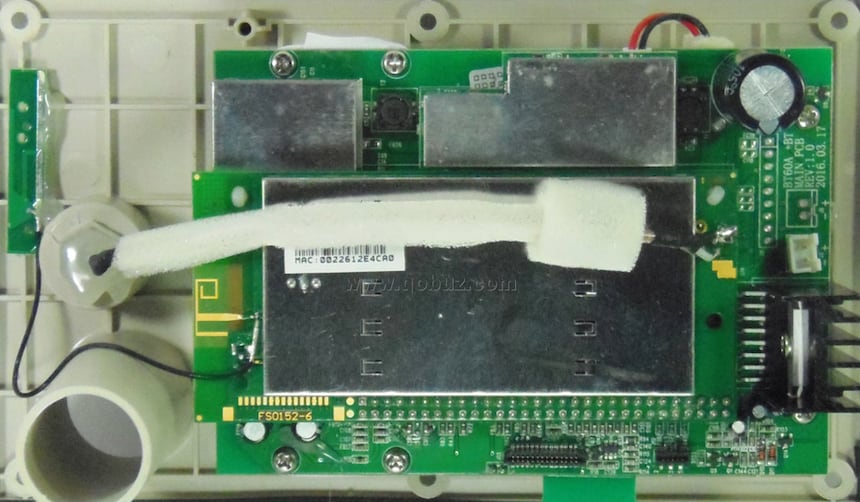
The battery charging circuit as well as the mains unit supply contacts are covered by protective shielding in order to block the radiation from the switching converters used in those sections of the electronics.
Once you remove the Wi-Fi module, you’ll discover the entirety of the electronics from the main circuit. It’s worth noting also the presence of a Princeton Technology PT7313E audio processor, used to commute sources and control the volume, bass and treble, as well as loudness, these last three settings being accessible through the menu. Slightly higher up, on the left of the PT7313E, the headphone amplifier is found, a Rohm BH3547F model.
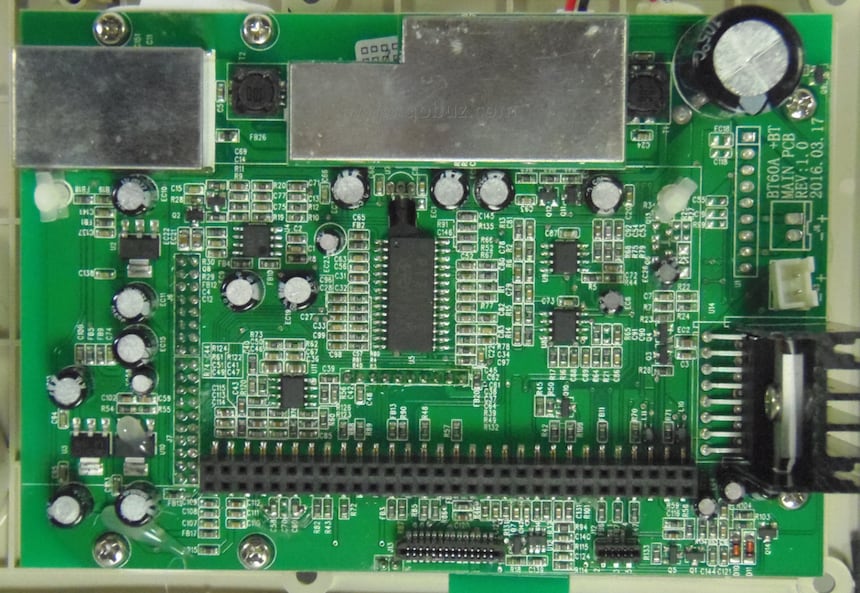
The speaker amplifier, mounted on a small finned heat sink, is a STMicroelectronics TDA7266M delivering 2x7W in 8 Ω.
Below, the Bluetooth card is mounted under the main circuit, and uses a CSR (Qualcomm) CSR8630 chip compatible with A2DP, but not with aptX.
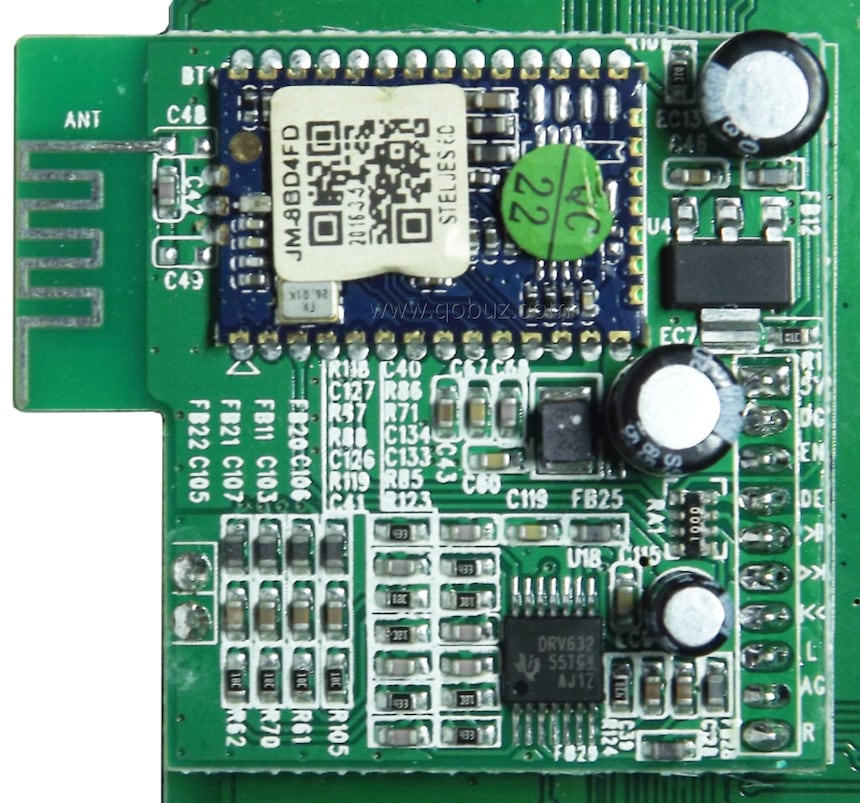
Sound
If it cannot claim Hi-Fi performances, the Steljes SA60 is nonetheless a small device providing a pleasing and not tiring sound, the extension of its only broadband loudspeaker in the treble—and in the bass incidentally—probably having a lot to do with it.
Anyway, we have streamed Qobuz in CD quality via the BubbleUPnP application and have encountered no difficulty. We were able to listen to various tracks in completely acceptable conditions and, to be honest, this writer would have loved owning such a radio during his childhood to discover musical works that the technology from that time often only allowed to discover in a much more precarious way.
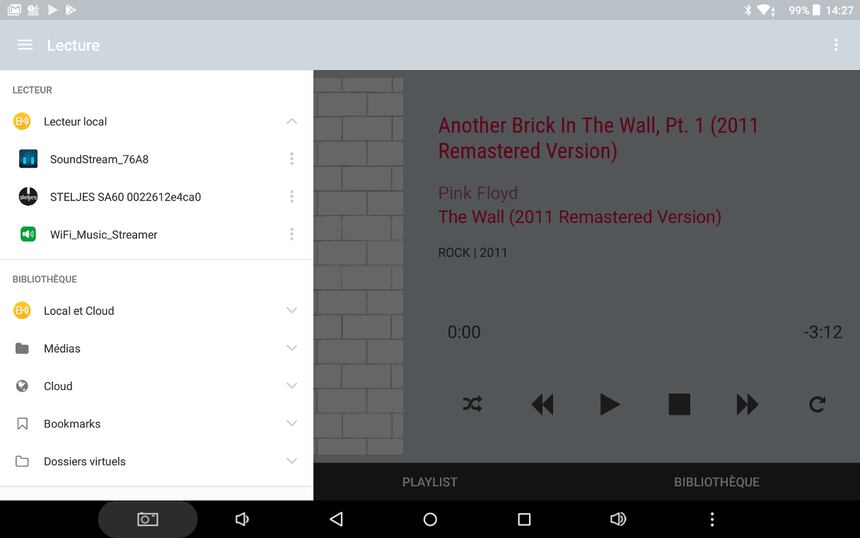
As for the sound results provided by the headphone out connected to our Oppo PM-3 headphones, it’s clearly another music, as the reproduction isn’t monophonic or depending on the small speaker anymore, and we can confidently talk about high-fidelity, which allowed us, among other things, to fully appreciate Goyescas’ Intermezzo from the album Granados: Orchestral Works, restituted with all of its colors and its scope.

We also listened to the Allegro from Dvořák’s American Quartet by connecting the line out of the Steljes SA60 to our Hi-Fi system, and streaming Qobuz via the BubbleUPnP application on an Android tablet, and we enjoyed a sound reproduction whose quality was worthy of a good DAC.
To conclude, we liked the versatility and practicality of the Steljes SA60 connected radio, as well as its pleasing sound reproduction in its basic use, which really reaches Hi-Fi quality on the line out and headphone out.
Audio Marketing Services (importer)
Price: 280 euros

